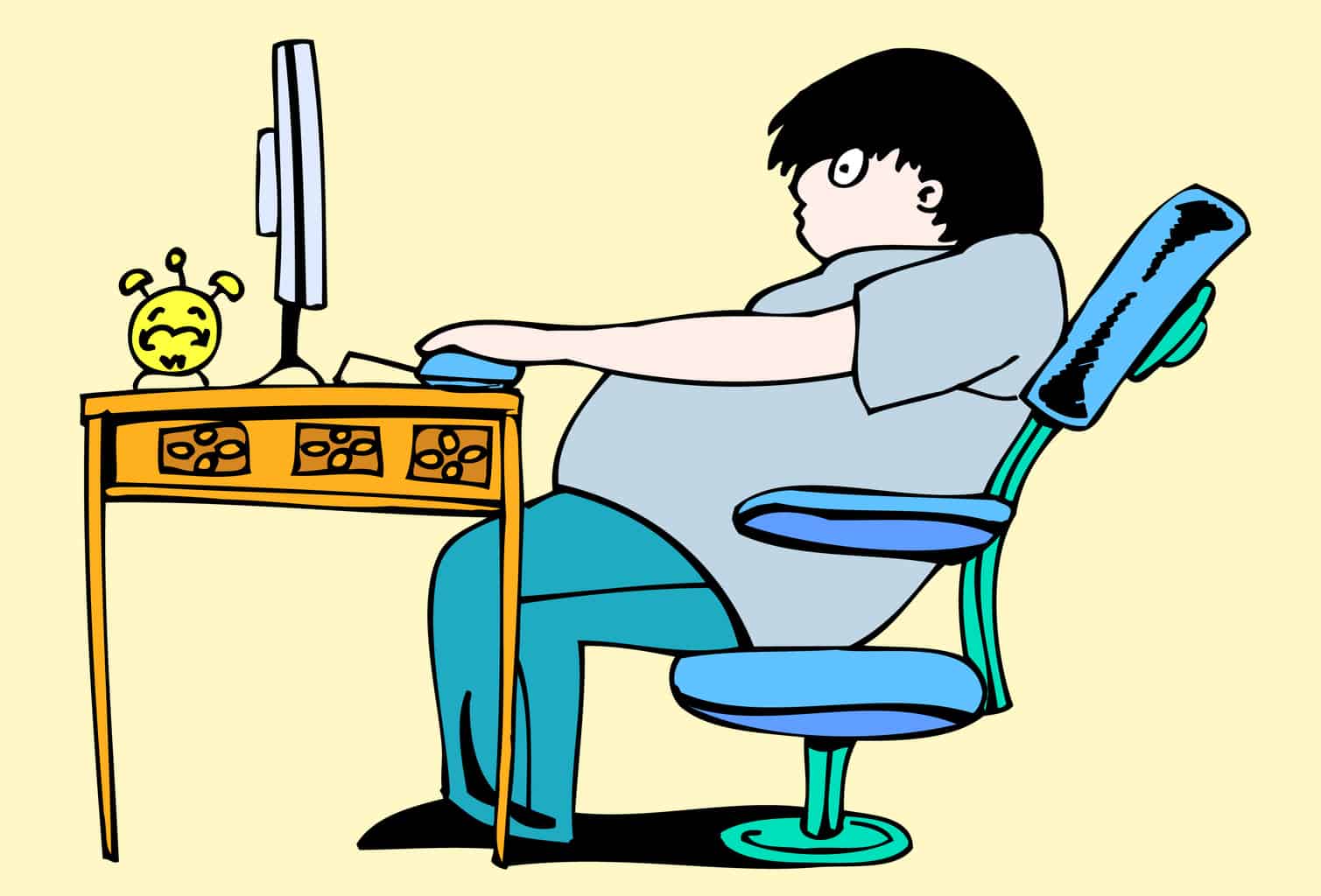 The evidence base for the workplace risks from prolonged sitting is still only just being collated. One of the latest research reports, in Preventive Medicine Reports, identifies two more clues to identifying these health hazards – the length of tenure and Body Mass Index (BMI) but the BMI is not what one would expect.
The evidence base for the workplace risks from prolonged sitting is still only just being collated. One of the latest research reports, in Preventive Medicine Reports, identifies two more clues to identifying these health hazards – the length of tenure and Body Mass Index (BMI) but the BMI is not what one would expect.
According to the article entitled “Office workers’ objectively assessed total and prolonged sitting time: Individual-level correlates and worksite variations“:
“Organisational tenure of 3–5 years (compared to tenure > 5 years) was associated with more time spent in total and prolonged workplace sitting time, while having a BMI categorised as obese (compared to a healthy BMI) was associated with less time spent in total and prolonged workplace sitting time.”
So people who have been in one workplace for between 3 and 5 years are more likely to sit for longer times at their desks. But it seems that prolonged sitting is not automatically related to an obese BMI category. The first finding is curious but the second does not sound right.
We have a stereotyped image of fat people sitting in front of televisions and computer screens – the “couch potato” – but this research seems to suggest that the prolonged sitting is not necessarily the cause of obesity, It does not say so in this research but perhaps we need to look more at what the couch/desk potato is eating and drinking rather than their posture.
This research focusses less on the individual factors than the organisational factors and working environment.
“The factors influencing workplace sitting are likely to operate at multiple levels – including individual, cognitive-social, environmental, and policy levels (Owen et al., 2011). The extent to which workplace sitting is influenced by factors acting at the individual-level, compared with at the organisational-level, is of interest when considering how interventions should be designed and targeted. This may include whether strategies should be individually-driven and targeted at “high risk” groups and/or aimed at influencing the organisational-level through policy and cultural change. Assessing the variation in sitting time between worksites, before and after accounting for individual-level factors, provides the opportunity to explore such issues.”
There are many limitations to this research of around 230 Australian public servants including that the findings may not be generalisable to all office-based workers however at this early stage of evidence gatheirng, clues may be all that are available pending further investigation.
The report states
“This sample of office-based workers engaged in high amounts of workplace sitting on average, with wide variation between individuals and worksites. On average, 79% of working hours were spent sitting; more than half of which was prolonged sitting (≥ 30 min bouts). These findings are consistent with other studies within office environments (Parry and Straker, 2013, Clemes et al., 2014 and Healy et al., 2013) and highlight the need for interventions in these settings.”
The mention of 30 minutes provides a context to “prolonged sitting” that may not match our stereotypes and it could be argued that the modern office layout and equipment would make it difficult to sit for longer than 30 minutes. Still, from the quote above, the study’s subjects were engaged in prolonged sitting for 40% of their working hours!
This research provides an alternate view on a couple of factors to that which is often offered by office furniture salespeople and some of the rudimentary guidance from occupational health and safety regulators. It also indicates just how early we are in research about the health risks of prolonged sitting. The research findings suggest
“identifying and assessing potential workplace-level correlates, such as physical environment and social-cultural factors, may be a useful next step in the research agenda for understanding and influencing workplace sitting.”

One reader has pointed me to several sites and articles that state that the BMI is a myth or that it should be used very carefully. It seems to be used in odd ways. Here’s one of those sites – http://www.npr.org/templates/story/story.php?storyId=106268439